Can an Australian country boy cope with life in the South African bush?
We Australians generally like to think that we aren’t too delicate and can handle a challenge or two. Surely there must be similarities of sorts between living in the Australian bush and here in the African bush?
Well, if you haven’t been to Africa before, then you can throw those preconceptions out the window.
It doesn’t matter what you think it might be like or what you’ve read about it in some article. The real rubber on the road stuff is living it and learning quickly along the way.
Here’s my Aussie take on life in the African bush.
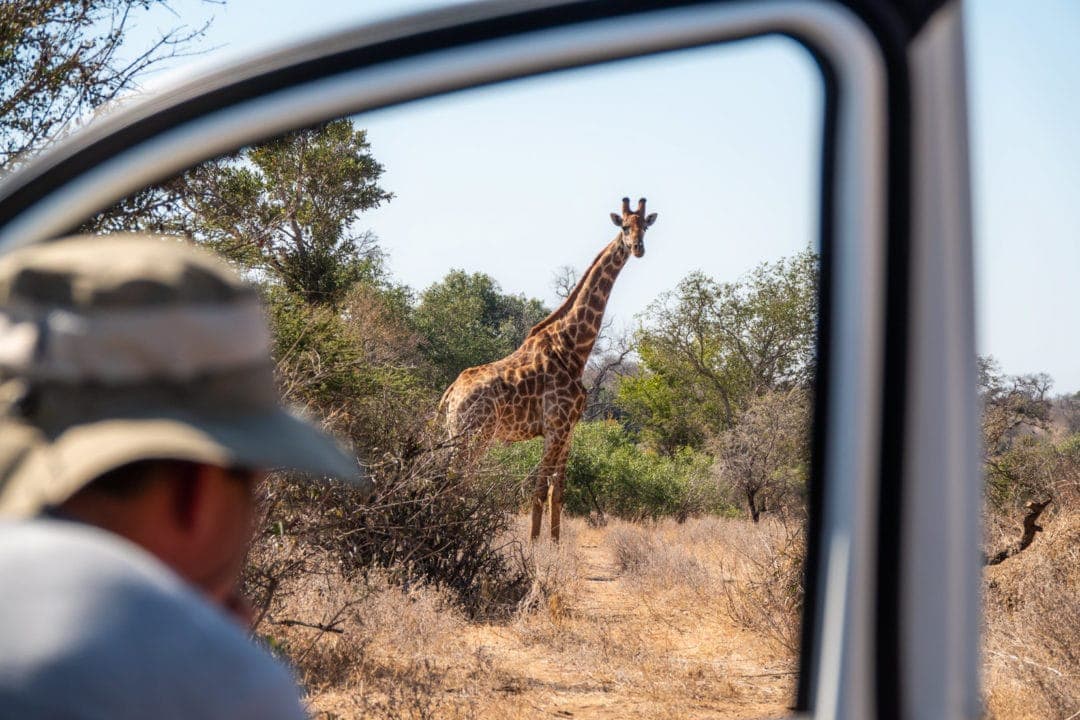
Klaserie Nature Reserve, Mpumalanga
We arrived in Mpumalanga, a province of South Africa, with the promise of great things to come. South Africa was still in lockdown, but we were able to apply for special dispensation to travel between provinces.
After spending five months in a house sit in the small town of Prince Albert, on the edge of the Karoo Desert, we were changing residence.
Due to Lockdown, we still couldn’t travel, so the pet owners we’d been sitting for invited us to stay in their rustic bush camp on 3000 hectares within the Klaserie Private Nature Reserve, forming a part of the larger Greater Kruger area.
Klaserie Private Nature Reserve has an open border with Kruger National Park game reserve, and if you were to draw a line from the Klaserie Reserve all the way east to the Mozambique coast, you wouldn’t cross a single fence.
Yep, it’s all open country for animals to pass through freely, meaning we can have African wildlife of all shapes and forms wandering through.
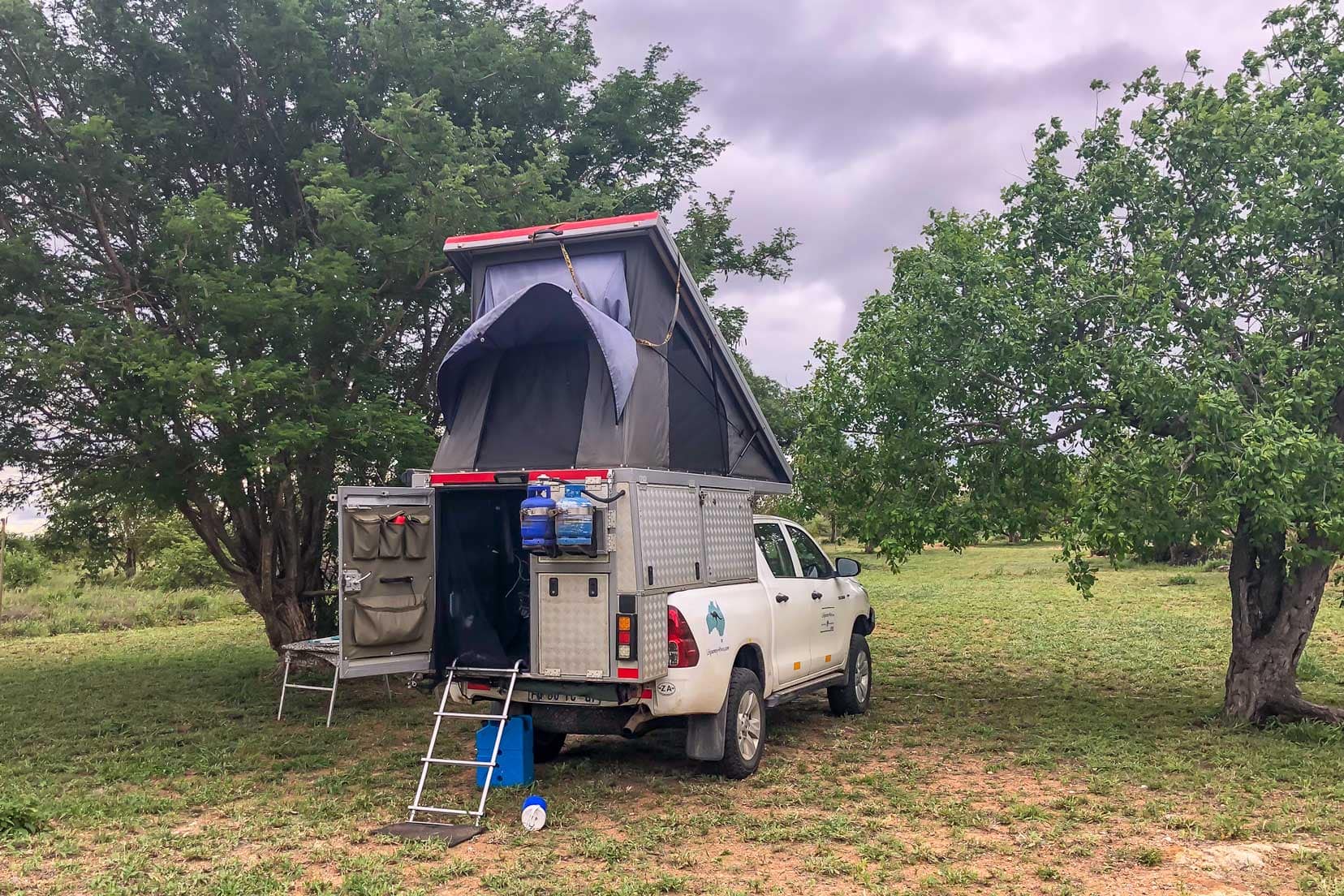
Here on the property, unlike in Kruger National Park, where staying in your vehicle during a game drive is obligatory, we could venture out each day or night, on our very own African safari in our 4×4 Hilux, which we affectionately named Bucky.
There are no South African road rules here. You can get out of the vehicle, walk around, have a picnic and take some photos.
All the while being vigilant because, as I said, anything could be out there!
Video – Life in the South African Bush
This video shows you why we fell in love with Africa.

Settling Into the South African Bush
The property owners spent a week with us explaining the operation of the bush camp, taking us on day and night game drives, and basically downloading tonnes of useful information to get us ‘up to speed‘.
We would have the bush camp just to ourselves for the next three months. This was the real Africa that we had been yearning for.
It took no time for us to fall well and truly in love with the African Bush and settle into life within.
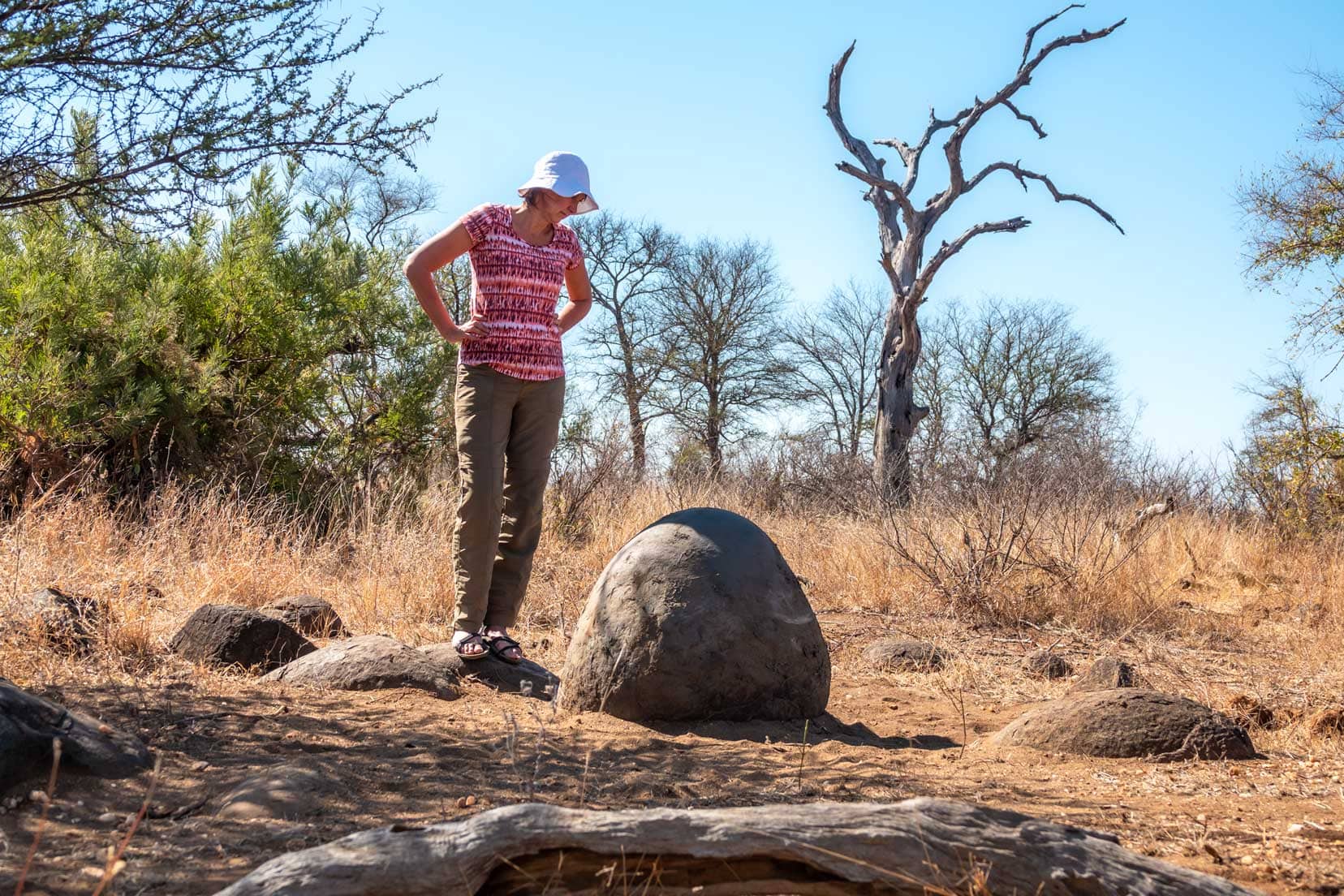
Our daily routine was no longer governed by the time on a watch but by sunrise and sunset.
The days of the week and the hours of the day were of little importance. The sights, sounds and smells embraced us, cocooning us in the African wilderness.
Within a few days, we felt part of the bush itself.
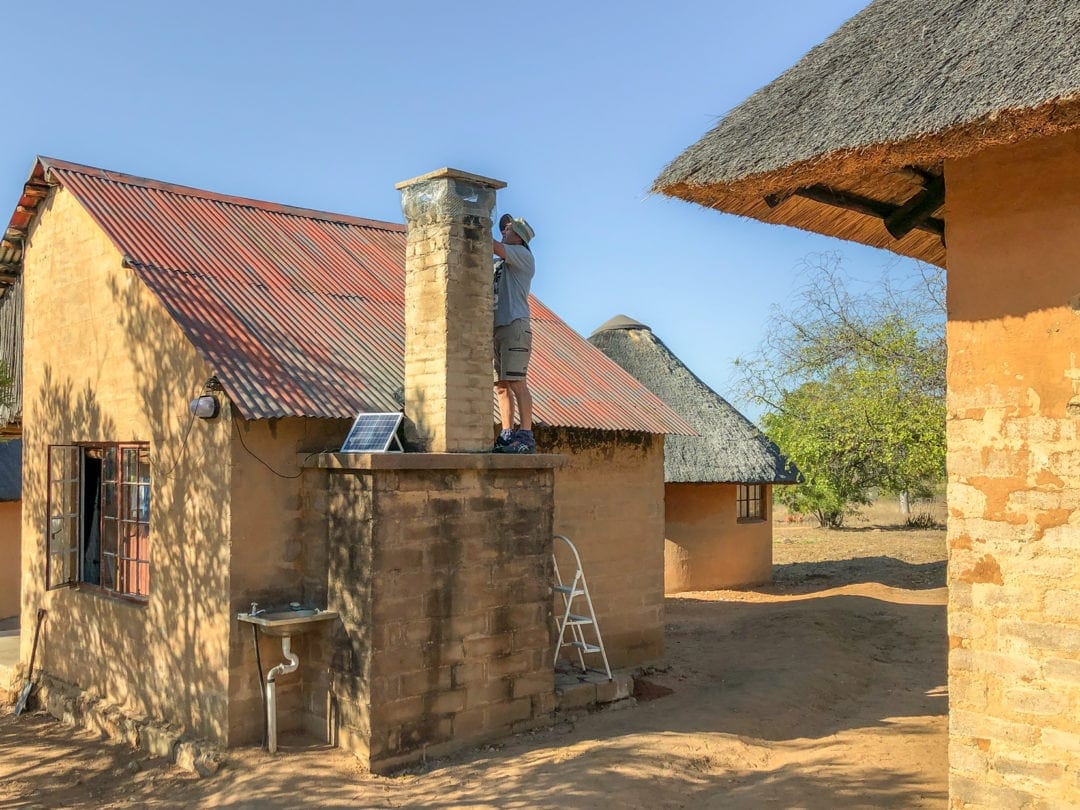
Let me explain.
Australia is a reasonable reference point for maintaining an awareness of the dangers of the bush. We have our poisonous snakes, spiders, crocodiles, and plenty of marine creatures for which we have a healthy respect.
However, this is Africa and it’s not ‘same same’.
You can’t learn this in just a few weeks. You need to proceed cautiously.
The danger radar is in full swing. You must respect the animals and give them room to feel comfortable with you there. Elephants and buffalo spring to mind.
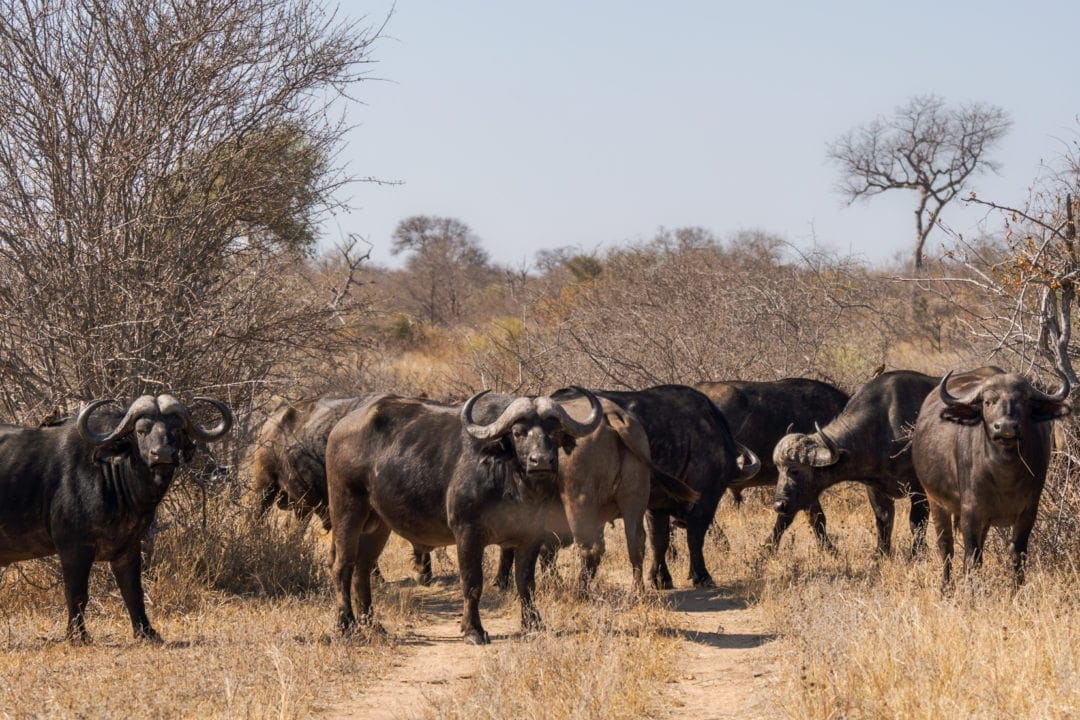
In the first few days of being on our own, we came upon a herd of elephants during a game drive and stopped a safe distance away. We turned off the engine, listening to work out where any others might be concealed.
The rustles in the river reeds indicated there were others in the nearby river. But elephants can be surprisingly quiet, and we were suddenly being eyeballed hard.
That was one of our first, ‘Whoa’! moments.
The takeaway lesson was to always err on the side of caution and give these creatures of the African bush plenty of breathing space.
We cringe when we see people in the shadow of big beasts chasing that hero photo. It often unnecessarily riles the animal and it’s just not worth the personal risk.
We were lucky our car didn’t block these two matriarchs from the herd. However, if we had parked closer, all hell could have broken loose.
Since then, we’ve had many more close encounters with elephants, some of the most memorable in the Namibia desert, of all places. So, we are no longer newbies in the world of safari drives, but those first experiences leave lasting impressions.
For more on the iconic animals you’ll find in Southern Africa and those that wander between Kruger and Klaserie, read our article about the big, the small and the ugly in Kruger.
The Bush Camp
The bush camp consisted of many rondavels, which included the living areas, kitchen, dining room, bedrooms, and workshops. The round rendered brick walls with an overhanging latched roof typify the traditional African-styled bush hut.
The thatched roof is not only a good insulator but also provides an inviting home for lizards and other interesting creatures.
Needless to say, Shelley’s interest was initially piqued as she tried to differentiate between friend and foe on the inner thatch above our bed. Still, the ceiling dwellers were too busy going about their nighttime routines to even bat an eyelid our way.
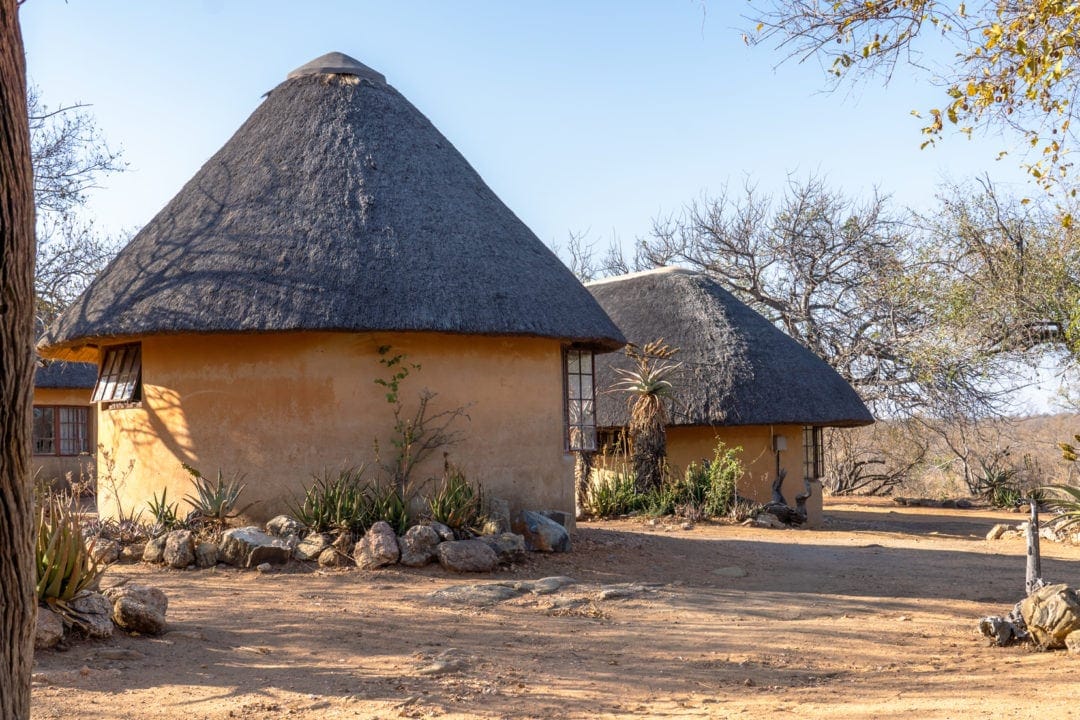
An electric 3-wire fence at about head height surrounded the perimeter of the camp. Its purpose is to keep elephants out of camp.
Letting those behemoths into the camp would certainly spell disaster because they’re known to be a bit destructive.
To make the most of the possible sightings from camp, we set ourselves up on the open verandah with our binoculars and various camera equipment, ready for action.
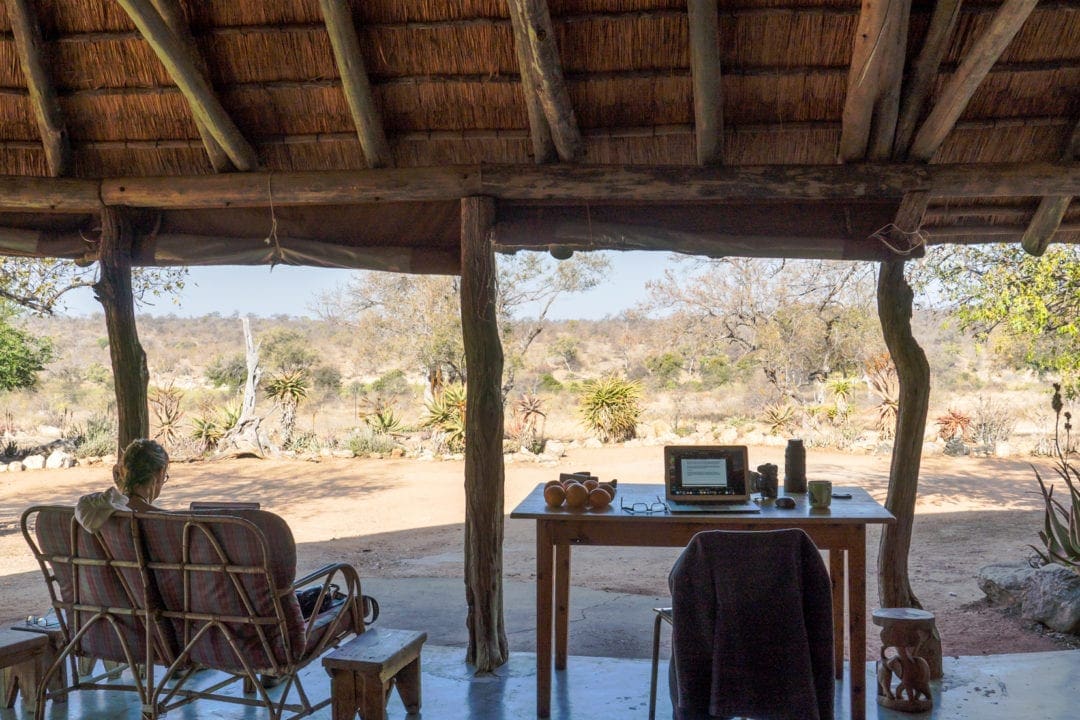
The bush camp overlooked the Klaserie River, 200 metres away. As you can imagine, its waters provide the lifeblood for all creatures, great and small, in the dry winter months.
On most days, we could see, if not hear, some sort of animal commotion down near the water.
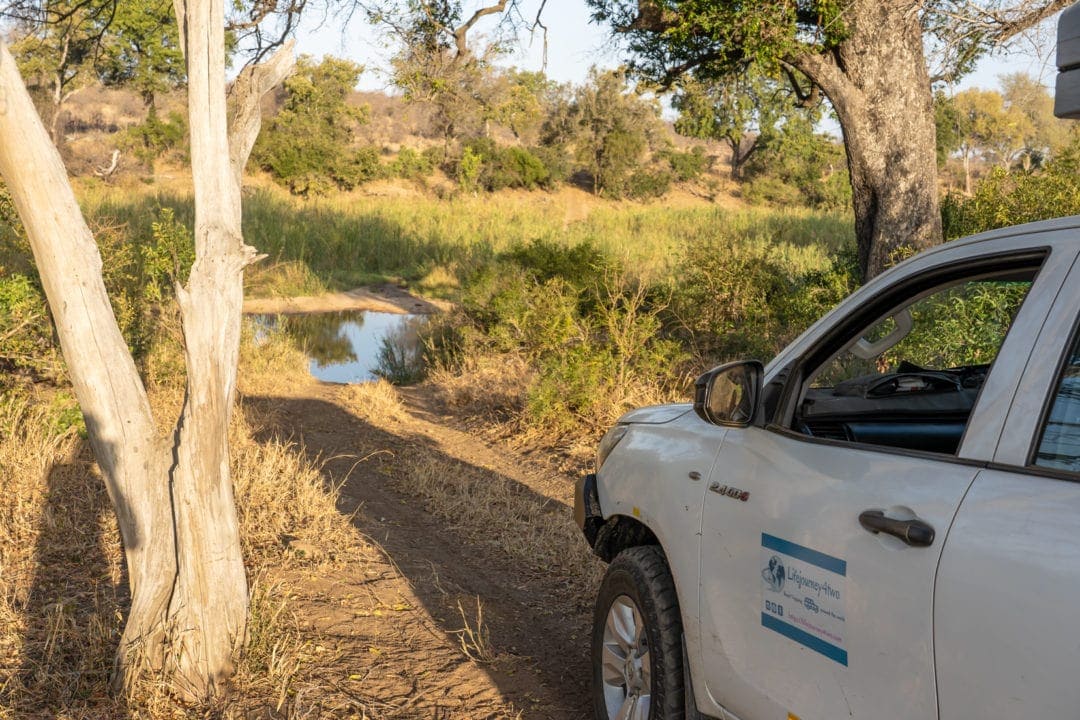
In fact, one afternoon, Shelley heard buffalo making a commotion on the other side of the river and wandered down into the garden with the binoculars to see what was happening.
As she neared the elephant fence, she heard a close guttural growl. Swinging her binoculars in that direction, she spotted a female leopard crouched in a nearby thicket, obviously none too happy to see her.
Slowly retreating and fighting off every instinct to run—never run—she reached the bedroom rondavel just as I arrived, wondering what on earth she was doing and whether I should grab my camera.
She yanked me into the bedroom and, with the door safely shut, proceeded to tell me what had happened.
After a few minutes, the leopard retreated, growling all the way back to the river, disgruntled at the interruption of its afternoon sojourn.
Read more about Shelley’s leopard experience and her take on life in Klaserie here. We’ve been back since and had some fabulous experiences that we shared in the post.
We had several more leopard sightings after that – but all from the safety of the car.
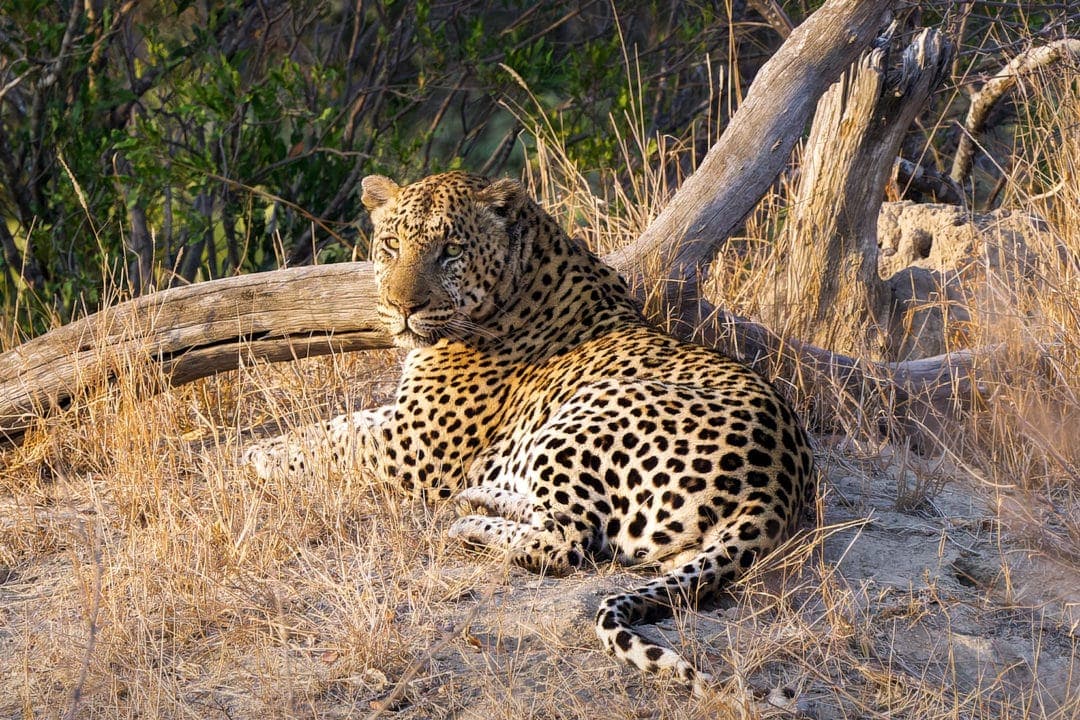
Our Africa Bush Camp Visitors
The electric fence certainly did its job because we were woken several times at night by the crashing and splintering of trees nearby.
Our open rondavel windows were only a few metres from the elephant fence, allowing us to quickly zero in with the spotlight to view the goings-on in the scrub.
Often, it was an elephant or buffalo doing the rounds, and we always hoped that power to the electric fence wasn’t lost.
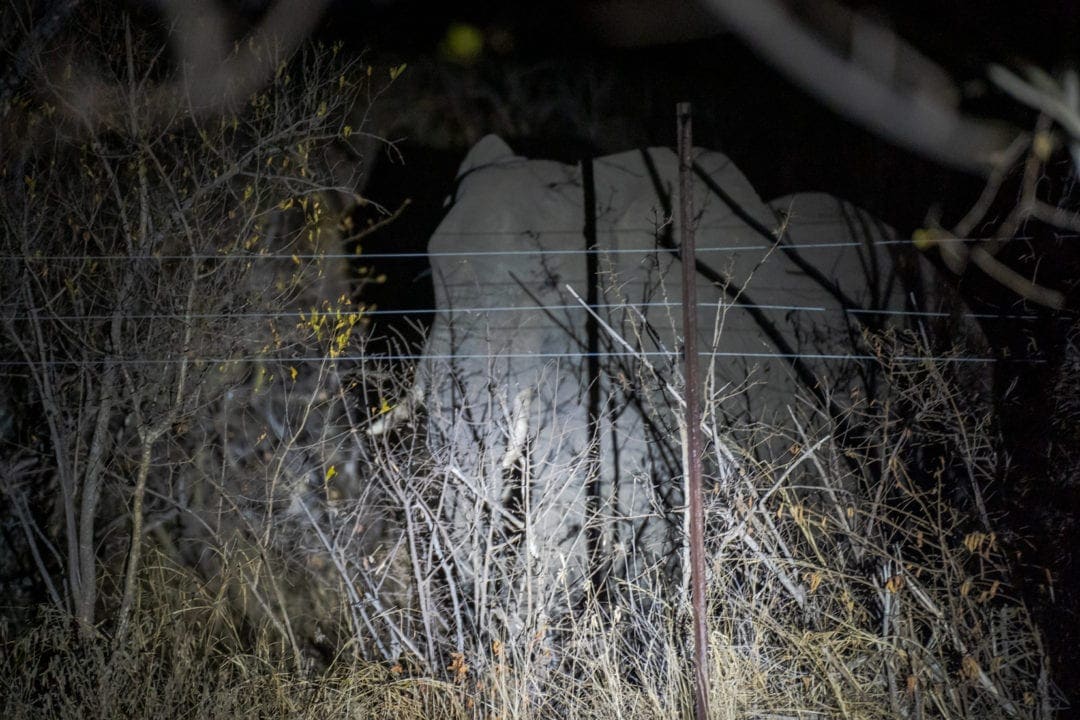
Unfortunately, the high wire fence also keeps giraffes away from camp. Harmless enough, we’d have them in for dinner if we could. These towering giants of the bush lope along and never fail to bring a smile to our faces.
Reminding us that, yes, this is Africa.
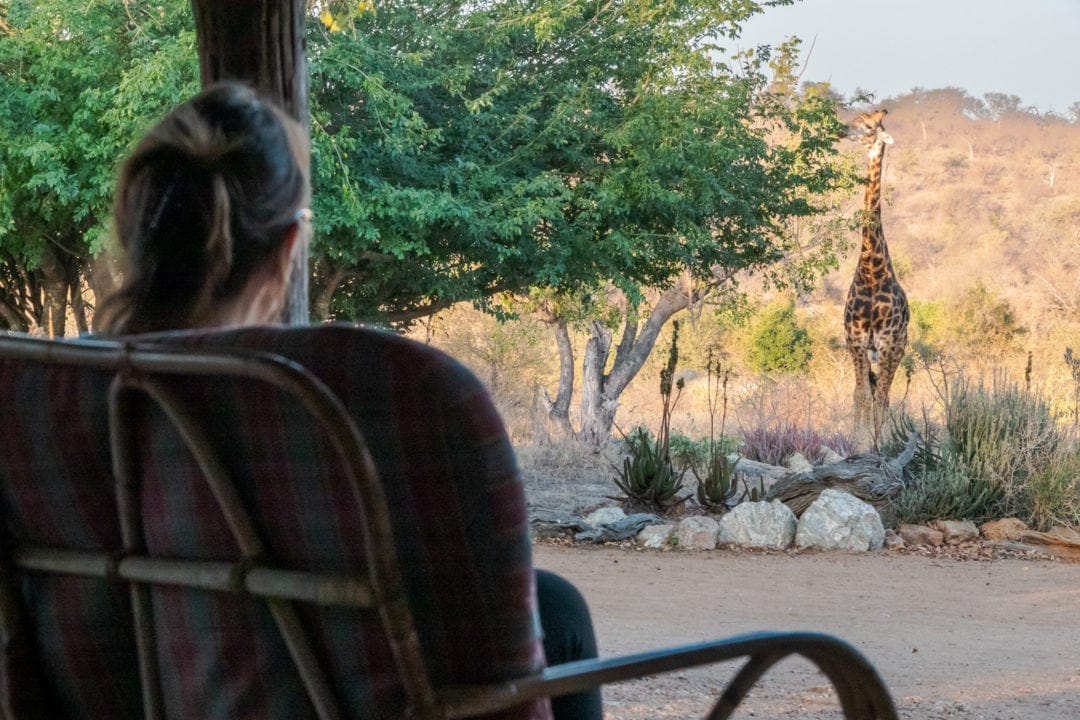
Really though, you can expect any bush creatures to wander through or close by camp.
We used to brush the sandy dirt of the paths around us clear of animal tracks at sunset, scrutinising them the next morning to determine who our night visitors may have been.
One morning, we pulled back the rondavel curtains to see two white rhinos grazing about 50 metres from us through one window and a giraffe through the other.
Were we just the luckiest humans alive?

A few old buffalo, or ‘Dagga Boys’ (dagga means mud or mad in Zulu, depending on who you ask), regularly made their nighttime haven inside the wire fence, settling down about 30m from our bedroom hut.
Buffalo are notoriously known as the bad-tempered boys of the bush. And any good safari book will tell you that if you come across one in the wild – climb up the nearest tree!
However, here they were, nestled down for the night in our front yard! Perhaps they felt safe among the rondavels, and this set their mind at ease when the lions declared the start of the night’s hunt with their territorial roars.
The buffalos might have been sleeping easier – but we made sure to triple-check their whereabouts before venturing out of our bedroom each morning.
Occasionally, shy hyenas poked their noses into camp at night but quickly retreated when they spotted us.
We could see them lingering around the perimeter, though, waiting for us to disappear before sniffing their way through the camp on the lookout for anything good to chew.
We often heard their soulful calls in the nighttime air – letting their pack know what they’d found or where they were.
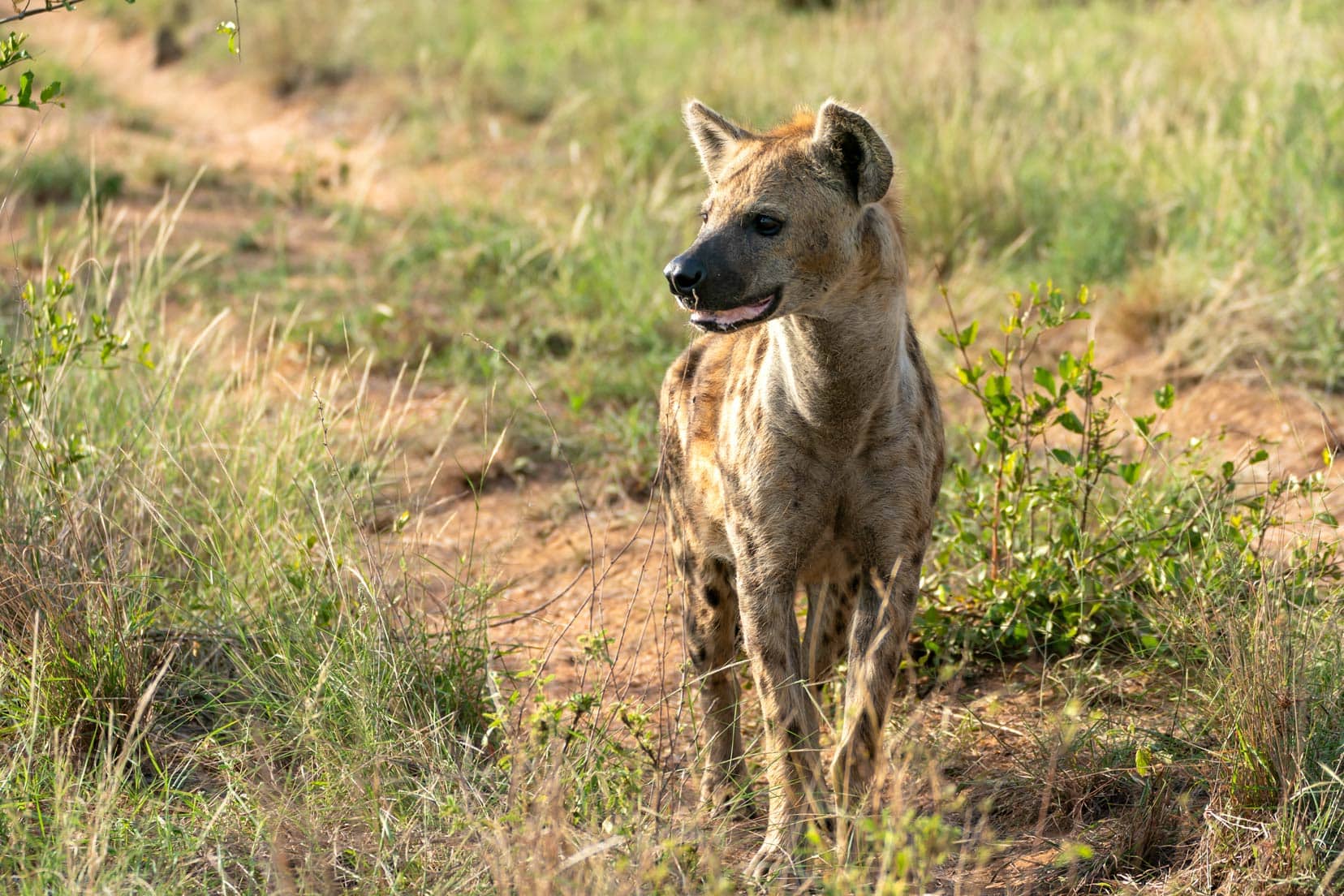
We’d find their dog-like footprints in the sand each morning and soon learnt not to forget to stash torches, tools, and anything that looked chewable out of reach before nightfall.
Walking the grassy camp perimeter sometimes turned up gnawed and discarded remains of items they’d taken a shine to.
They certainly enjoyed the sofa cushions we’d left on the verandah lounges. After a particularly windy night, we found them in pieces strewn across the garden. They were obviously operating in stealth mode under cover of the wind noises.

We were then in full ‘hyena-proofing’ mode! Each night, we made sure to surround the car with prickly branches to protect our tyres. We’d been shown the handiwork of hyenas on a safari vehicle’s tyres at another bush camp and had no intention of letting hyenas take chunks out of ours!
The branches worked. Either that, or our Cooper tyres just weren’t to taste!

A local baboon family often wandered by the outskirts of the camp and sometimes mustered up enough courage to enter the outer gardens. Young ones clung to their mothers’ backs, watching the big wide world from their sanctuary above.
Their footprints were often found around the fire pit behind the camp as they looked through for unburnt scraps of food.
While we were there, only one human visitor dropped by.
He was the head game ranger from Klaserie HQ and our closest neighbour from 3km down the road. He just wanted to say hi to the new resident Aussies and to warn us of helicopter activity for the pending rhino de-horning operations that were about to take place.
Yep, we were right in the middle of the action, alright!
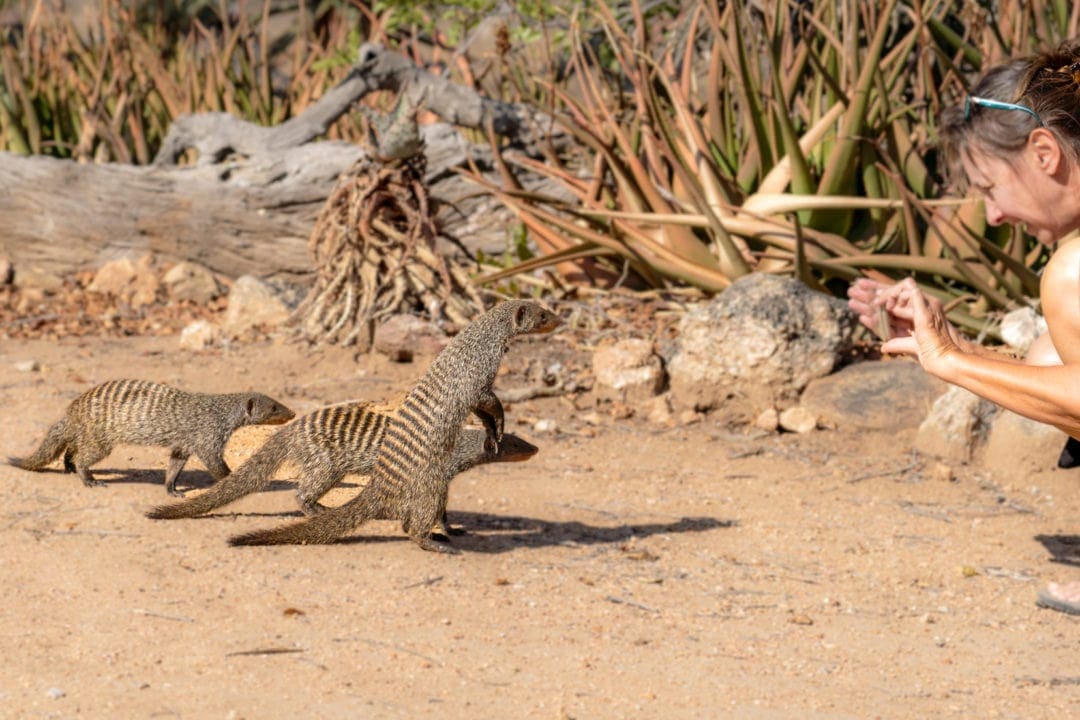
Birdlife in the South African Bush
So far, I’ve not mentioned the many beautiful birds found there. I’ll not go into each of their particular nuances and habits, as that deserves a story all on its own. But suffice it to say we enjoyed watching them for hours!
If you’re interested in birds, you’ll also enjoy our article on the common birds we’ve encountered in South Africa and my Birds of Kruger post.
Here are just a tiny sample of the birdlife visiting us daily.
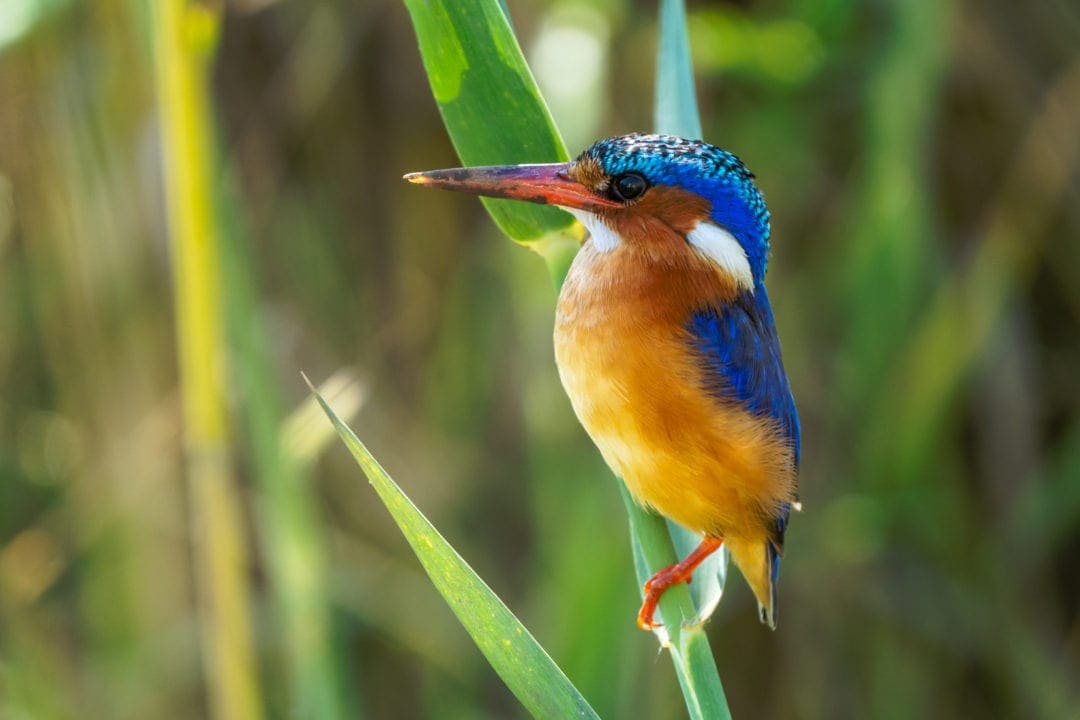

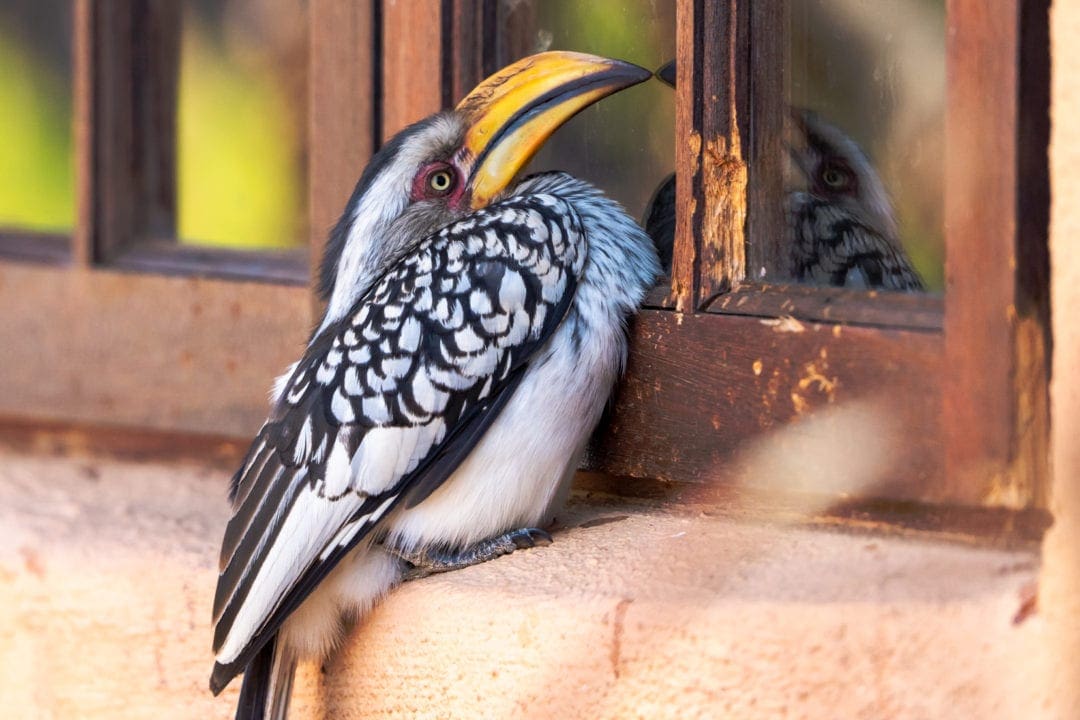
South African Bush Game Drives
We ventured out for both day and night game drives. The anticipation of what we might see was exciting—you just never knew what was around the next corner.
By day, you might see a solitary leopard warming himself in the early morning sun’s rays, lions lying on the sandy riverbed with full stomachs from the night’s kill, or herds of elephants striping trees for the succulent inner core.
And a special time was dusk.
The ending of one shift and the start of the next. And it was at dusk that we stumbled across one of the rarest and most special sightings we have encountered.
A pangolin.
We didn’t even know what it was when we first spotted this weird looking creature, but we later found out that we were witnessing one of the rarest African bush encounters. Some rangers, who’ve lived and worked their whole lives in the bush, haven’t ben lucky enough to come across one of these.
And in the course of the next few months we would be laying claim to having seen two! You can read more about our incredibly lucky encounters here: Rare Pangolin Sighting – not once but twice.
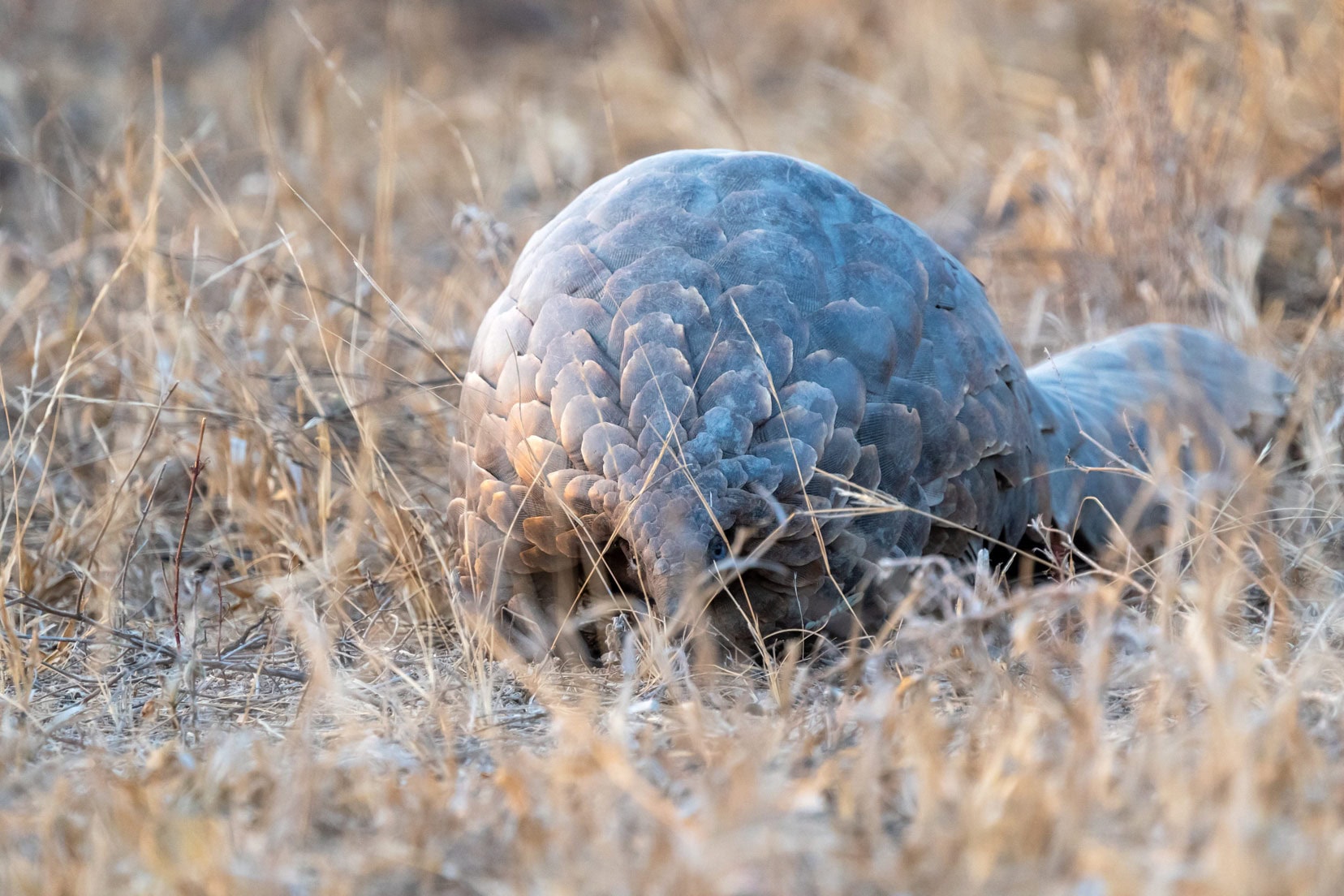
By night, you might see the regal Kudu males (antelope with spiral horns) that spook easily, the cute Steenbok, or the herds of Impala with eyes that twinkle brightly under the spotlight.
Dark shapes of buffalo and elephants are commonplace, and sometimes, we even catch a glimpse of the silhouetted shape of a rhino vanishing into the scrub.
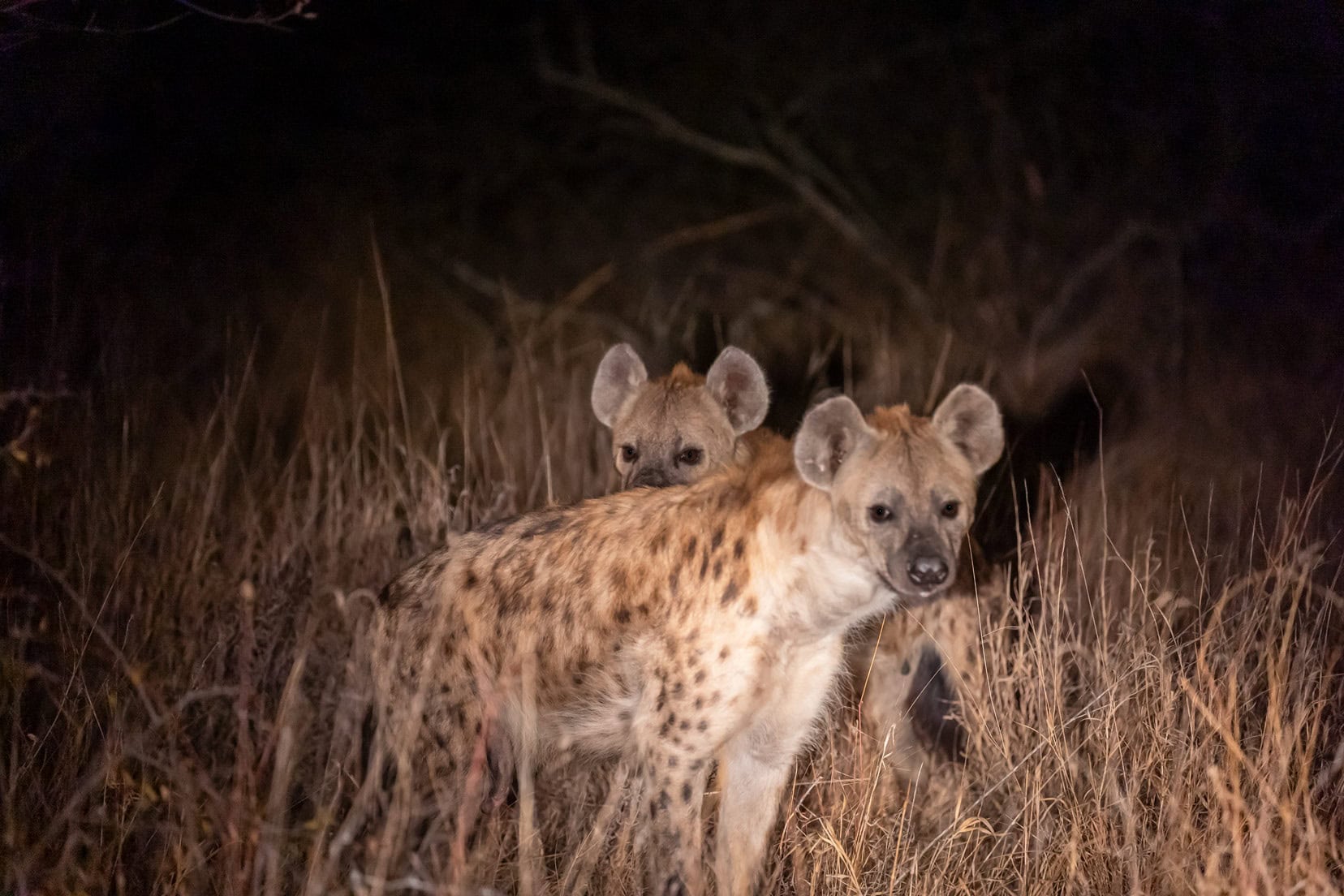
Driving off a mud map at night sure tunes up your sense of direction. After a few weeks of driving around the 3000 hectares, you might think that the bush tracks about the hills should start to look familiar.
Well, let me tell you. Not at night.
It’s pretty easy to miss a turn when bushes fringe the tracks, and you find yourself at a water crossing where there shouldn’t be one. It’s all part of the fun. Being excellent navigators, we didn’t get ourselves lost… really, we didn’t!
Oh, and one small but important point worth mentioning is to always carry spare camera batteries when on safari in your vehicle. When you happen upon a great sighting, you don’t want to be caught out.
For all my tips on capturing the best of your safari, head over to my post on Safari photography, which is full of tips and tricks to ensure you go home with memories and momentos you can look back on for years to come.
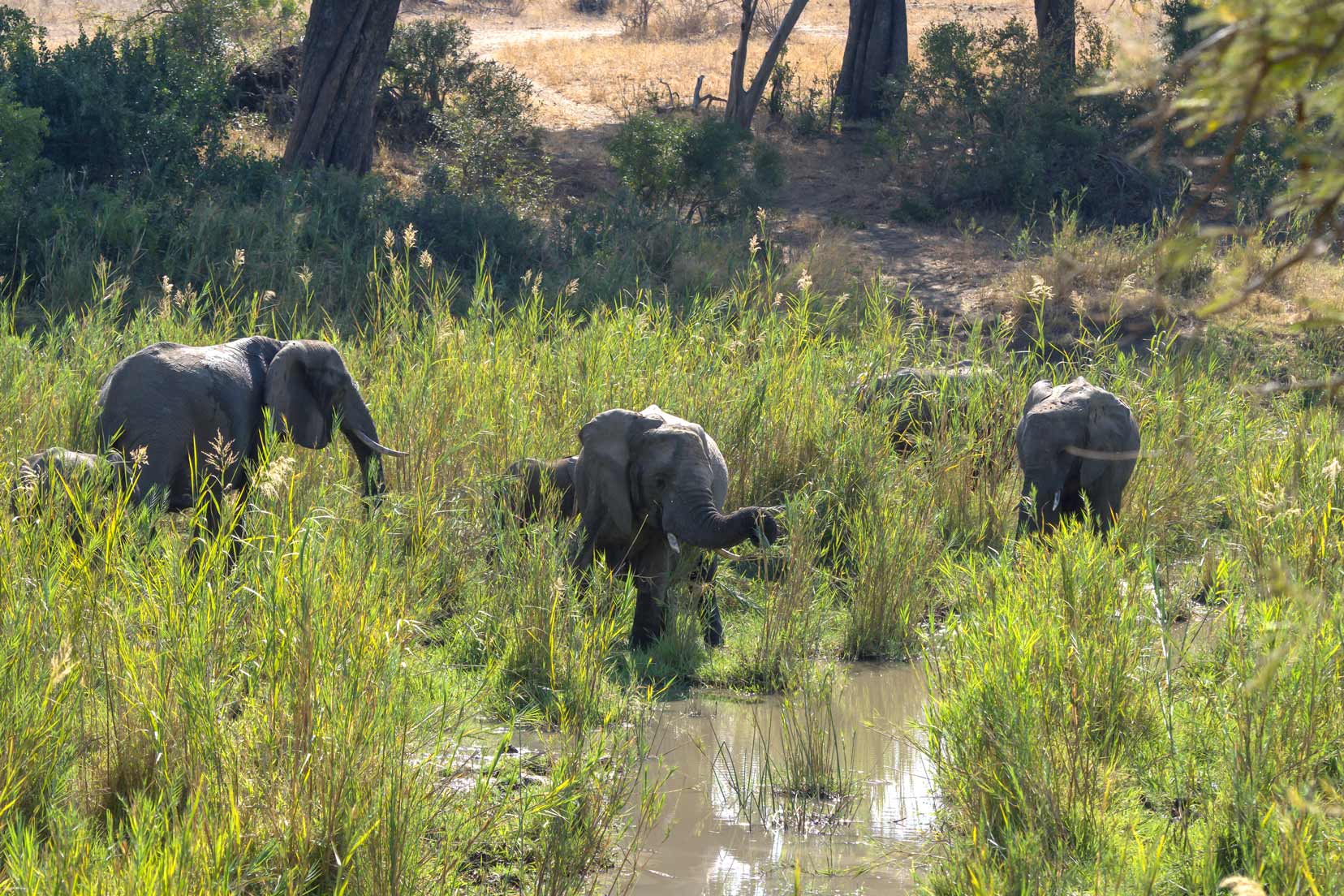
Things That Make You Go Whoa!
We’re naturally pretty cautious people, but walking around in the dark, even though it was within the camp perimeter, sure elevated our level of awareness.
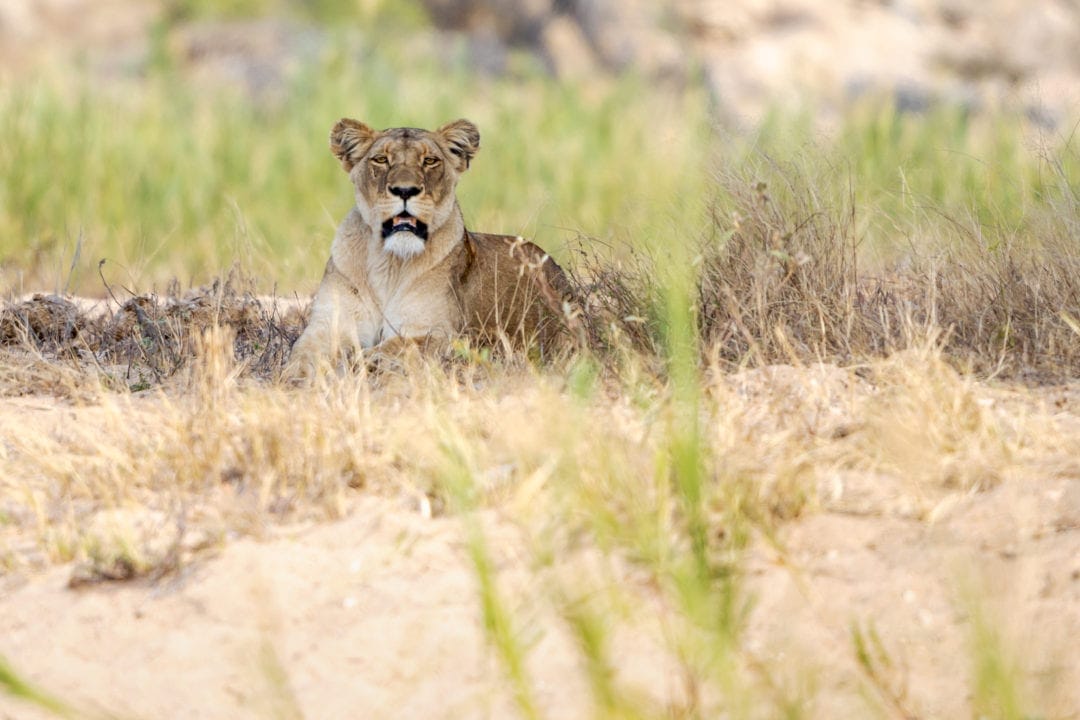
Within the camp, moving between rondavels, we shone torches about camp and towards the scrub, looking for any tell-tale animal eye reflections, particularly mindful of those of the feline family.
A couple of times, I forgot to close the electric fence gate. This could have resulted in elephants having a field day if they had wandered into camp, as they can be quite destructive.
So, I would have to walk 50 metres in the dark, with a torch in each hand, to the gate and then back.
I tell you, it feels three times as far at night.
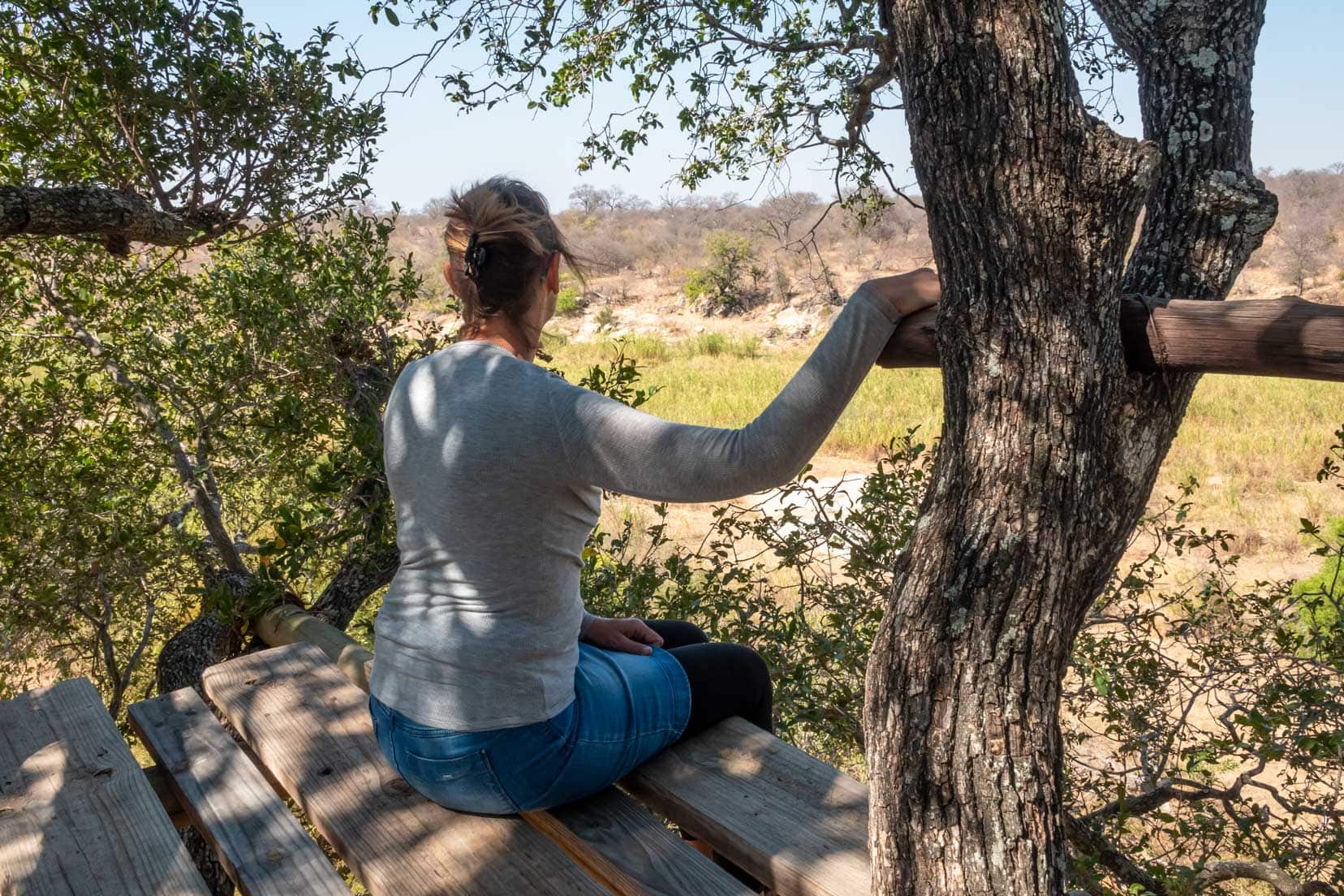
An Australian Take on Life in the South African Bush … That’s a Wrap
Our stay in this South African bush camp was nothing short of fantastic. Just us two and the South African bush, literally, at our doorstep.
We were staying in a private bush camp – but if you’d like to experience this incredible reserve, take a look at booking a safari stay in either:
⭐️ Klaserie at Ivory Wilderness River Rock Lodge – we were lucky enough to stay there for a couple of nights and the game drives experiences were incredible! | Check reviews and availability here
or
⭐️ Klaserie Safari Drift – we didn’t stay here but had a meal and game drive which was super | Check reviews and availability here.
It would take some time to get to know South Africa’s wildlife and their particular habits, but we loved every step of the amazing adventure.
What unbelievable memories and experiences we were already making, and we Aussies were beginning to hold our own in the South African Bush.
This was just the beginning of all of our incredible adventures in Africa.
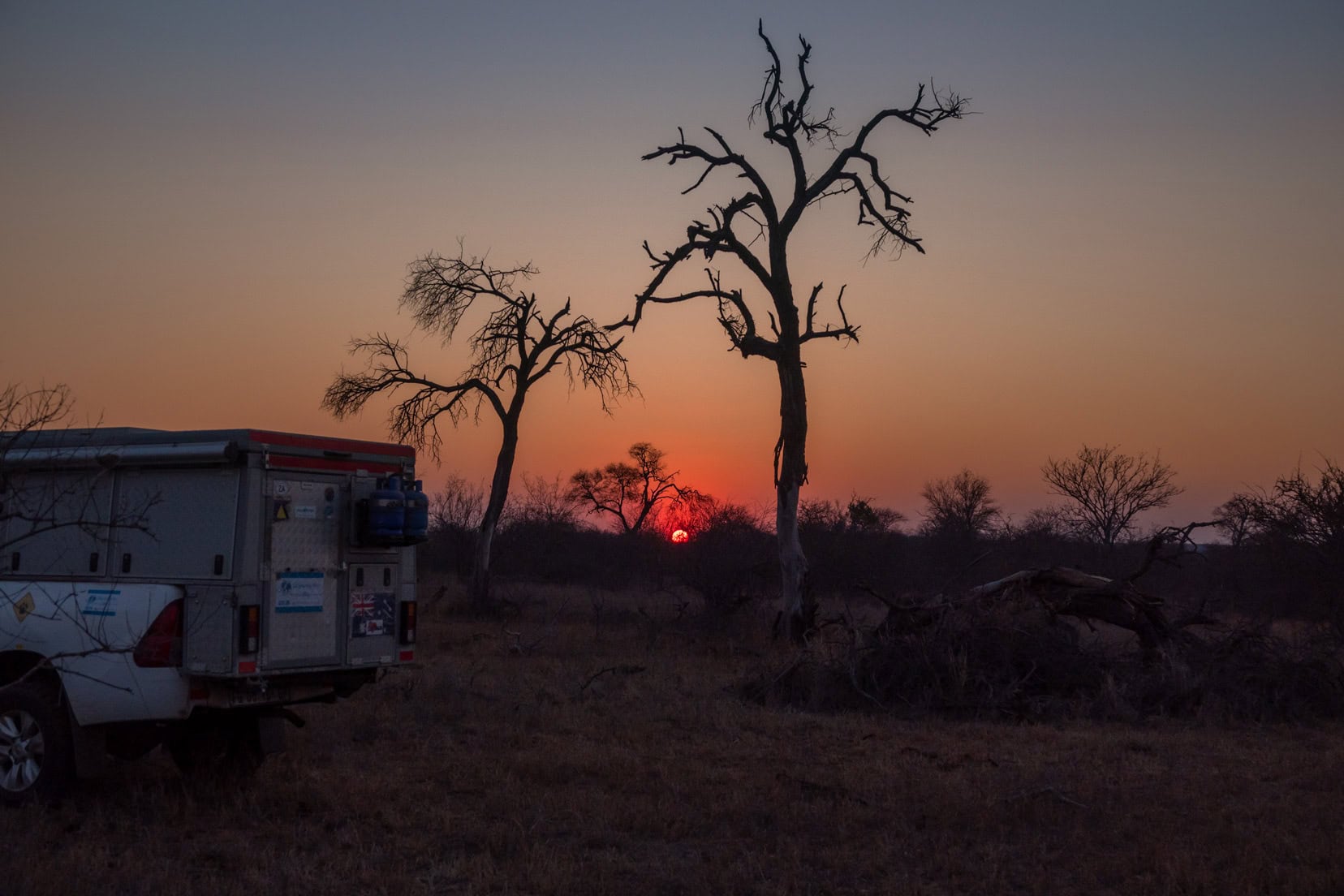
Pin and Save for Later
Read More:
- What to Expect on a Guided Safari St. Lucia, iSimangaliso Wetlands, South Africa
- Driving the Sani Pass, South Africa
Before You Go – Are You Planning Your Travels?
These are the travel resources we recommend and use when planning our trips.
- 🚘 Car Hire: We use DiscoverCars.com
- Motorhome/Campervan Rental: We highly recommend the Motorhome Republic
- 🪪 Order your International Driver’s Licence online here
- 🛏 Book Accommodation: We use Booking.com to find accommodation that suits our budget
- 🐶 Pet Sitting/Pet Sitters: Check Out TrustedHousesitters here (Use our Discount code: LIFEJOURNEY25 for 25% off. )
- Activities and Experiences: Get Your Guide and Viator
- Travel Insurance: Safetywing or World Nomads
- 🥾 Travel Gear and Accessories: Check out our top picks here — Lifejourney4two page on Amazon
For a more thorough list, visit our Travel Resources page here.

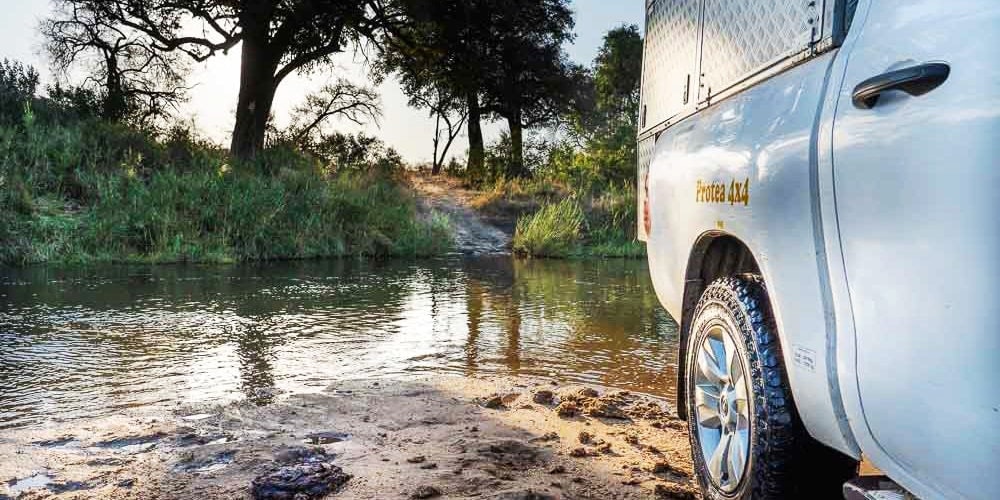

What an intriguing perspective! Your comparisons between the Australian outback and the South African bush are fascinating. I loved the vivid descriptions of the wildlife and the way you captured the essence of both landscapes. It’s amazing how different yet similar these regions can be. Looking forward to more of your adventures!
Thanks so much – glad you enjoyed the post:
Hi Lars and Shelley, we’ve been enjoying your Insta photos and following your African adventure. What an amazing experience! It’s thrilling and a bit scary at the same time. The self-guided safari is definitely out of our comfort zone. Good on you for what you’ve done and are doing!
Hi Ying and Brad, thanks so much for your feedback and it’s great that you are following our African adventure and enjoying our photos. We hope we inspire you to get out there too – if we can do it – you can too! Enjoy your ‘hobo’ life and stay in touch.